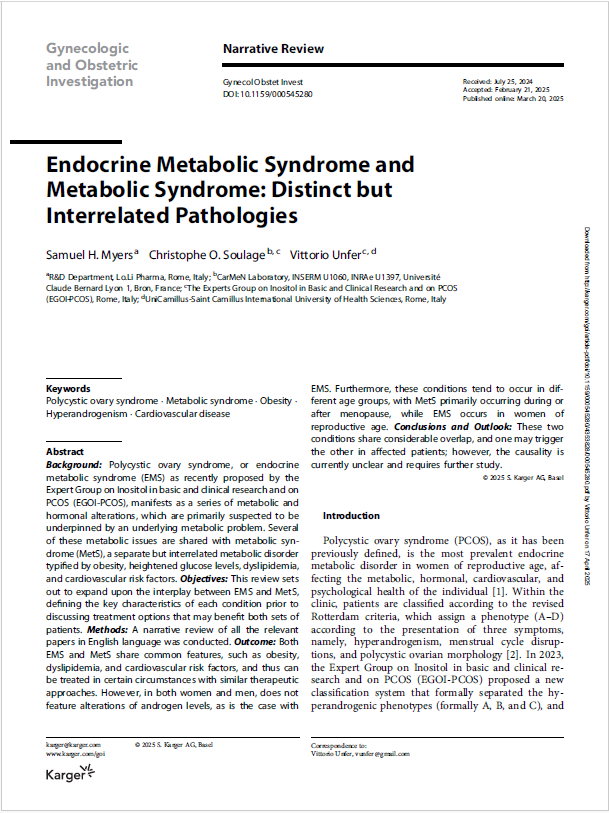Authors:
Myers SH, Soulage CO, Unfer V.
Background: Polycystic ovary syndrome, or endocrine metabolic syndrome (EMS) as recently proposed by the Expert Group on Inositol in basic and clinical research and on PCOS (EGOI-PCOS), manifests as a series of metabolic and hormonal alterations, which are primarily suspected to be underpinned by an underlying metabolic problem. Several of these metabolic issues are shared with metabolic syndrome (MetS), a separate but interrelated metabolic disorder typified by obesity, heightened glucose levels, dyslipidemia, and cardiovascular risk factors.
Objectives: This review sets out to expand upon the interplay between EMS and MetS, defining the key characteristics of each condition prior to discussing treatment options that may benefit both sets of patients.
Methods: A narrative review of all the relevant papers in English language was conducted.
Outcome: Both EMS and MetS share common features, such as obesity, dyslipidemia, and cardiovascular risk factors, and thus can be treated in certain circumstances with similar therapeutic approaches. However, in both women and men, does not feature alterations of androgen levels, as is the case with EMS. Furthermore, these conditions tend to occur in different age groups, with MetS primarily occurring during or after menopause, while EMS occurs in women of reproductive age.
Conclusions and outlook: These two conditions share considerable overlap, and one may trigger the other in affected patients; however, the causality is currently unclear and requires further study.

